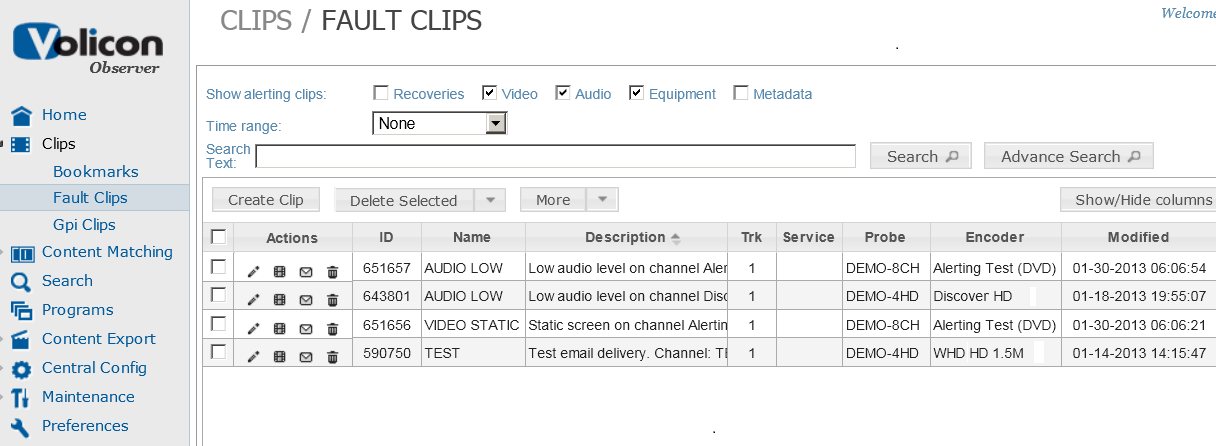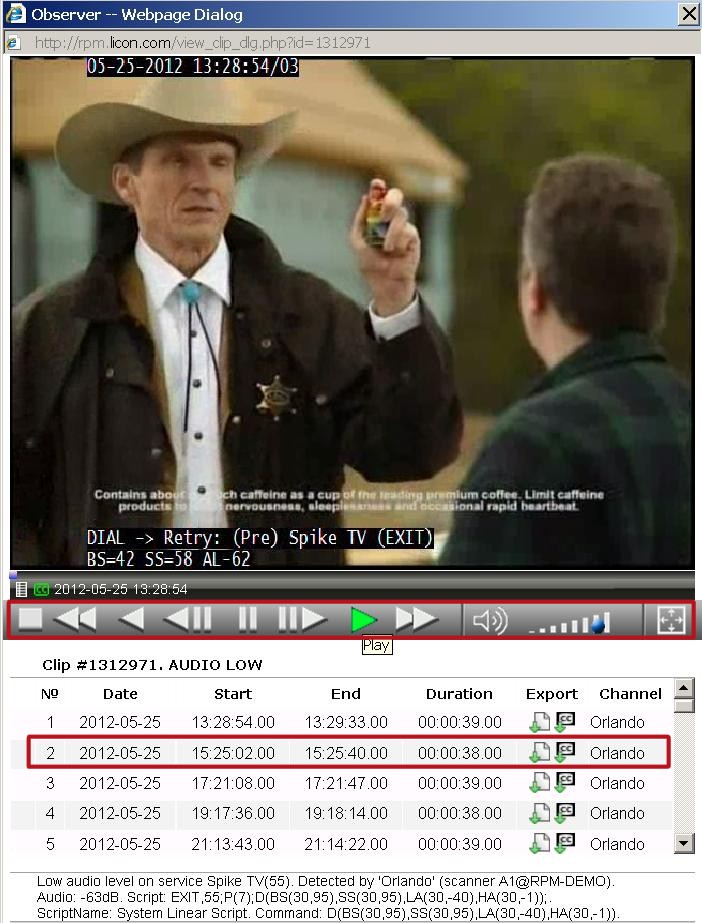Fault Clips¶
Whenever the Observer detects a fault in a media stream, it generates a fault clip. You can use the fault clip to review a problem and see exactly what occurred, because the clip was recorded at the time of the occurrence.
To access your fault clips, go to: Clips → Fault Clips

Figure: Fault clips¶
The fault clips page shares several features with the Bookmarks page, such as the Action icons and Advanced search. See the “Bookmarks” section @5.1 for information on these features.
The “Quality of Experience” package needs to be available for fault clips to appear. Fault clips are configured in the backend.
Export fault clips¶
To export your fault clips use the process in the “Export clips” section @6.3 above.
Fault Clip Player¶
To play a fault clip, from “Fault Clips” click on a clip to open the fault clip player. Each fault clip might have several tracks, comprised of faults of the same type. The player uses DVD type player controls.

Figure: Fault Clip Player¶
The player provides you with a clip fault description just below the player controls. The description includes the information below:
Fault name/description
Track number (No)/Clip ID
List of fault clip tracks
Date and duration fields
Export icons
Media
CC – Closed captions
Channel – Service name
Click on a track to play that occurrence of the fault on the service.
A script description follows the list of tracks.
Report Fault Clips in ASCII¶

<Report> button lists Fault clips in text or CSV
System will prompt for a folder on your client PC to download the report
Excel spreadsheet will display clip parameters in separate columns:
The system will prompt for a folder on your client machine to download the report. Opening the report with a spreadsheet application will display clip parameters organized in separate columns.

Figure: CSV File of Fault Clips¶